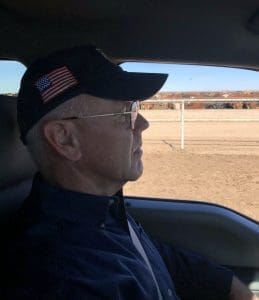
By Chris McClure Contributing Editor
Charles Marion Russell’s watercolor of a starving cow surrounded by a pack of hungry wolves is one of his most iconic paintings. It was done in response to the request of a wealthy Montana stockman who asked him to survey the condition of the cattle on his ranch after the devastating blizzard of 1886-1887. Rather than an oral or written report, Russell forwarded his painting, which spoke volumes. On the back was a penciled caption – “The last of 5,000 (Waiting for a Chinook).”
That blizzard dramatically de-stocked the overstocked Judith Basin and other ranges of the upper Plains. The widespread storm severely impacted the financial condition of many ranches, including that of Teddy Roosevelt in the nearby Black Hills. In some ways, it helped to bring an end to the open ranges and changed the way ranchers viewed stocking rates and the way cattle were managed on those vast, seemingly endless miles of rangeland.
Weather has always been a factor in raising livestock. When coupled with the cyclical responses to market forces that signal herd contraction or expansion, it can often be an exacerbating factor such as the one we currently face. Severe drought accelerated herd contraction – especially in the West – over the past few years. Not only did it force ranchers to destock because of reduced forage supplies, it significantly affected forage prices across the country. Shortages of hay and other feedstuffs such as cotton burrs have increased the cost of feeding cattle to the point that what would normally be a time of profitability in the ranching industry caused by a shortage of animals to feed for harvest has eroded that potential profit and continued to accelerate liquidation.
None of this is news to anyone who has been in the industry for any length of time, but I question sometimes how short-sighted we can be. A few months back I sat in a meeting with a number of feedyard managers and owners during which the coming shortage of feeder cattle was mentioned. One of the Independent feedyard owners commented that it didn’t really matter, he’d just have to pay more for the cattle he fed. I don’t doubt that to be true, but I question the sustainability of high prices for beef in light of the inflationary pressures that are eroding consumers’ available cash for groceries. I suspect many will shift their expenditures to less expensive forms of protein.
The other issue I see is that the same cyclicity that drives contraction and expansion of the cow herd affects the cattle feeding industry in a somewhat counter-cyclical manner. Often, when prices are higher for the cow-calf segment and they reach profitability, feedyards are forced to cut into their feed margins to subsidize the losses on the cattle they own in order to keep their mills running efficiently. It often places the smaller feedyards in an untenable position that causes them to sell or reorganize with additional infusion of capital. I expect to see several operations change hands over the next few years – some of them at rock-bottom prices. Do we really need further consolidation in the industry? Would it give any more leverage with the packers?
Speaking of packers, we see a similar cyclicity in the expansion and contraction of harvest facilities. When supplies of cattle are abundant and the packers are making good profits, everyone thinks they need to be in the packing industry. As supplies tighten and margins are squeezed, that new capacity that requires years to bring into production finds a changed landscape in which to operate. Those profits frequently become losses.
Weather, market volatility, political pressures that include new rules regarding water, carbon emissions and the “ethical” question of eating meat in context of a world “gut-check” response to longer-term climatic conditions that have been blamed on an anthropocentric model – it is a strong headwind that we face. I don’t think it is a chinook bringing a warmer, friendlier weather pattern, but indeed may be a blizzard of epic proportions. Our responses to the changed “weather” may determine if we are the “last of the 5,000” or whether we will thrive as an industry. Fortunately, it is a resilient industry that has weathered many a storm.





